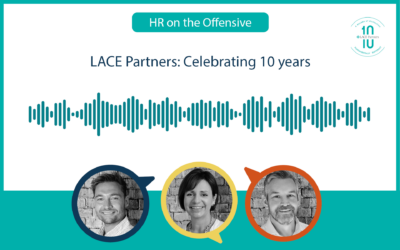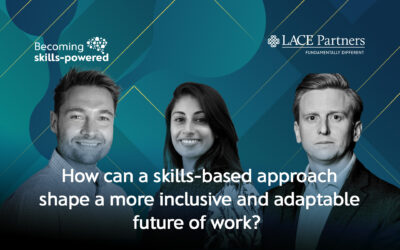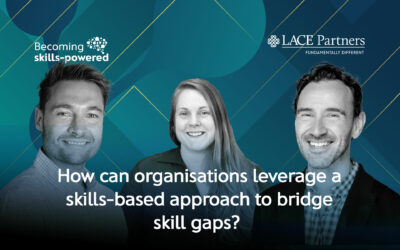This week we spoke to Duncan Casemore, one of the co-founders at Applaud, a digital experience layer that is designed to simplify digital HR. Applaud have recently released a digital EX trends report so we wanted to find out what they learnt and discuss how and why organisations should hyper-personalise their employee experience.
It’s an interesting time to talk about employee experience and digital employee experience. For the last few years we’ve discussed ‘the future of work’, and then something changed last year and all of a sudden the future of work became ‘the now of work’. Overnight everything changed enormously and the employee experience (once separated from the digital employee experience) became the same thing for a lot of people.
Our research into EX through this incredible change takes stock of where people are at now; not quite post-pandemic but after a lot of transformation. We asked about 150 senior HR leaders what their organisation’s digital experience looks like in the face of what everyone has been through, and how it’s working for them today.
What were some of your reflections on the results of the research?
An interesting finding from our perspective was that it was clear that some organisations were already further ahead before the pandemic started and had set themselves up to be a more agile organisational structure or more resilient to fast change. These organisations almost used pandemic as a catalyst for change, whereas others had to really fight hard to embrace change within their organisation. What has become clear however is that in both instances there is still a way to go to truly optimise digital employee experience.
In the report less than 14% of companies you spoke to offered induction to remote working when someone moved from physical to remote, why do you think that is?
I think that we’ve been so caught up trying to keep the lights on and enabling people to be able to work from home that it hasn’t come to the forefront of HR team’s agendas. Some of the work that retail and financial organisations have done to rehouse their call centres into home locations is just astonishing! It’s been an enormous amount of work to physically get that organised, so I don’t think perhaps we’ve stopped and thought enough about what the actual employee experience is now.
What we need to do now is adapt; how do we make our home working environments more productive? How do we cater to flexibility and what personalisation can we offer around that? It’s actually pretty astonishing to think that in hindsight we haven’t equipped employees to know how to work at home when they’ve never done it before. Equally, I think the same is true for managers who might not know how to look for signs of wellness or other health signals remotely.
Only about 27% of your respondents said their HR was consumer grade in terms of experience but what does consumer grade look like for HR?
As an industry we haven’t yet done enough to look at EX through the lens of the ‘employee consumer’. In the same way that marketeers have been obsessing over customer experience for so long we need to do the same in HR. It’s important to look at the way our ‘employee customers’ engage with HR services and really try to make that experience simple, seamless, enjoyable and memorable.
The gap between fast developing CX and HR’s evolving EX continues to grow – are there ways that HR teams can step up and build pace here?
There are several things which are quite simple but have a big impact and start closing the gap between employee expectations and the reality of what they’re engaging with. It starts with a great vision that is truly customer focused. You can then begin by defining your personas and looking at some of those key journeys; there are hundreds of employee touchpoints but there are probably thirty or forty critical ones so it’s important to really focus on those.
Re-designing experiences for those critical touchpoints is a great starting point but you also need to make sure you gather enough feedback from the employees themselves. Too often do we make decisions for people without them being in the room; co-designing experiences with the actual customer in the room is essential.
Your report suggests that less than 10% of organisations offer a level of hyper-personalisation to their EX, can you shed some light on that?
Yes it’s interesting. Stripping it back, only 40% of organisations we spoke to offer any kind of personalisation and as these were all multinational businesses that means that all employees globally receive the same experience. It takes a fair bit to line up the structures which allows an organisation to deliver hyper-personalisation. At Applaud we are seeing some customers personalising by country and region so an employee in the UK is getting policy information that relates to their country and FAQs that are relevant to them and their job role. It’s also important to think about persona personalisation, so ensuring that you are giving a different experience to a retail manager than you would an office manager.
Interested in what you read? Listen to the full podcast to hear more on this discussion, or see how it relates to your organisation by reaching out to us directly. To learn more about Applaud and how they strive to help organisations deliver great digital employee experience, reach out to Duncan.






